Matador Network's Blog, page 1036
August 12, 2019
Growing up in Baltimore, Maryland
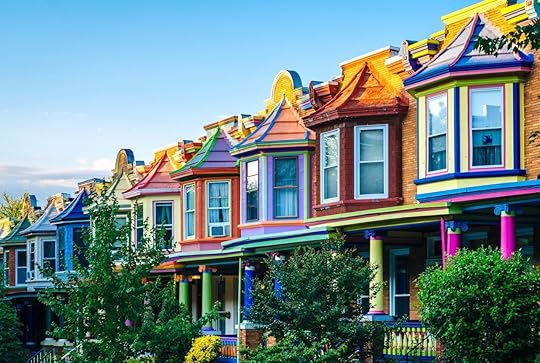
I was born in Baltimore. My mother and father were too. In fact, my family is three generations strong here. We’re from all over — East Baltimore, West, and the county, too. I’m a product of it all because my family has lived in every part of this city and its outskirts. I’ve known about the city’s ills since my childhood and even witnessed some of them growing up, but it’s always been the most beautiful place I’ve ever seen. Not in an Instagrammable kind of way, but in its grit and the spirit of the people.
My grandma was born in 1932 in Havre De Grace, Maryland and spent the rest of her life living in East Baltimore, or as we call it ‘down the hill’. Her parents moved to the East Coast from North Carolina where her dad worked as a chauffeur and her mom as a housewife before she was born. The generation prior would’ve been alive between the late 1800s and early 1900s, meaning that my great-great-grandparents were likely slaves in the Carolinas.
My grandma told me about how she picked cotton as a child with her siblings for the family to earn extra money each week. When I asked about the ‘60s and if she had marched with the civil rights leaders, she reminded me that she was a single mother with five children by then, so she didn’t have much time to march but recalled the resilient climate in which those around her fought. She told me about the day people marched on Washington and how she had friends who were heading to the capital to go as she watched from home in Baltimore.
And her daughter, my mother — often reminded me what it was like growing up in a racist and segregated Baltimore in the 1960s and 70s. She recalled the times she had to run miles home after being chased by her racist classmates.
My memories of Baltimore are a lot different than those of my matriarchs. The Baltimore I know has always been a place brimming with black joy. It’s a place where summers as a kid meant flocking to the city pools, ordering a snowball with marshmallows, and sitting out in someone’s yard with a box of crabs. My sense of home is in those thick Baltimore accents that are northern but with a little southern drawl, too, hearing, “Bal-da-more,” “tew,” or “ice-cold waters, ice-cold waters for a dollar!” When I’ve stayed away too long, all I need to do is get on the highway by North Avenue and catch a brother in a suit selling the best bean pies I’ve ever eaten to reassure me that I’m home.
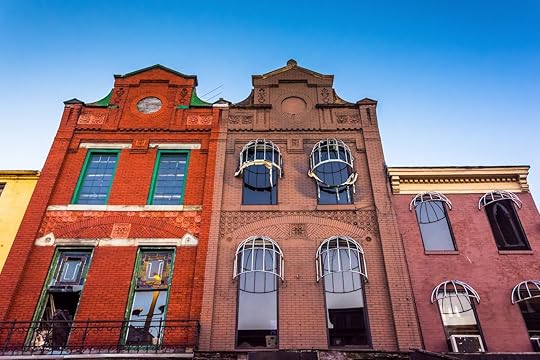
Photo: Jon Bilous/Shutterstock
As children, my sister and I were up by 6:00 AM — sometimes earlier — many Saturday mornings to get our hair done at Flair Hair salon in East Baltimore’s Old Town Mall. Flair’s was the center of the universe at that point in my life. We’d stick around to watch our hairdresser (who had also done my mom, aunties, and grandma’s hair too) slick perms and fancy up-dos into everyone’s hair. The stories that the women shared about work and life always taught me something or at least made me laugh. Even if I shouldn’t have been listening to some of their conversations, there was always a lesson in the end.
The entire salon watched movies and the news together, we sang, laughed and even cried. In the best moments, it didn’t seem to matter that right outside the door the neighborhood was rife with abandoned shops, boarded up homes, and poverty just a block away — where my mother grew up. Even in the midst of so many people’s pain, we always had community.
That’s the Baltimore I’ve always known.

Photo: f11photo/Shutterstock
By middle school, we had kiddie discos at Easter time to look forward to. At that time, my cousins and I spent our Friday nights making up dance routines (or, as we called it “rocking off”) to Baltimore club music. The FM dial at granny’s house was always turned to 92Q where DJ K- Swift would be playing the latest mixes. The songs were often repetitive, with fast beats heavy with percussion which made it impossible to resist dancing. Songs like “Rider Girl,” “Jiggle It,” and “Knuckleheadz” made our tape-recorded playlists every week. By the time the weekend rolled around we were ready to pull out our synchronized choreography at the local skating rink.
My teenage years meant spending the weekends at a friend’s house and plotting on what parties we were going to. It usually started with a trip to the mall or a walk around the inner harbor just to peep what was happening for the night. We’d usually end up at a house party of a friend of a friend because we were too young to hit the bars.

Photo: Artscape/Facebook
In the summer, we never missed Artscape or the AFRAM festival. The AFRAM festival was one of my first experiences seeing so many black people celebrating each other’s existence in such an unapologetic way. “Hey sis, I’m loving your hair” or “that outfit is everything” — compliments were commonplace. Vendors were selling their kente cloth clothing, accessories and even classic Baltimore foods like crab cakes. It’s always been my favorite time of year in Baltimore.
I spent one of the best summers of my college career as an intern at a youth arts center in Sandtown, where I learned so much about the generation coming up behind me. They were jovial and excited about the summer projects and wanted to beautify the city. I witnessed them going door to door every day to talk to the homeowners in the community about the plans they had to paint the mailboxes around the way. By the end of the season, they’d conceptualized and painted dozens of mailboxes and murals across the city. The powerful murals had important messages of self-love, community, and kindness weaved throughout them. From then on, I knew the future of this city and its people were in good hands.

Photo: Felix Mizioznikov/Shutterstock
Truth is, Baltimore has always been a special place full of hardworking people who made extraordinary contributions to this city and country. Our city is home to Johns Hopkins, one of the countries leading hospitals — where my uncle worked and died. Baltimore is home to a beautiful harbor on which this country’s treasured national anthem was written by Francis Scott Key back when it served as one of the country’s most important ports. It’s home to Baltimore Ceasefire, an organization actively working to end gun violence in our city. Many of the country’s top Fortune 1,000 companies — like Black & Decker, Legg Mason, and T. Rowe Price — call Baltimore home, too. Baltimore gave the world soul and blues with Billie Holiday and Eubie Blake. This city birthed Mario, Mo’Nique, Dru Hill, Gervontae Davis, and Micheal Phelps.
The Baltimore I know is full of artists, entrepreneurs, poets, makers, politicians, authors, community organizers, teachers, and activists. It’s also full of underfunded public schools, police brutality, food deserts, abandoned homes, neglected youth, and homelessness. But the latter seems to be the only aspect that ever makes the news.

Photo: Optikalefx/Shutterstock
Unfortunately, there are a lot of cities just like Baltimore that are deemed unfit by politicians and the media — too violent and not worthy of being fixed. When President Trump tweets about the city being “disgusting” and that “no human being would want to live there,” he’s not just insulting an entire city beyond moral comprehension — he’s just flat out wrong.
People from Baltimore are proud to be from here. People want to live here. Most of my family still lives in Baltimore and always have. They work here, play here, raise families here and care about the communities in which they live. They’re forever resilient and have electric, undying spirits that make living Baltimore irreplaceable. After all, they call it Charm City for a reason. 

More like this: The 7 best black-owned restaurants in the DMV
The post The real Baltimore is a place brimming with black joy appeared first on Matador Network.

Alternative medicine in Europe

Alternative medicine is always accompanied by controversy, with those who swear by its healing potential and others who denounce it as quackery. When it comes down to it, most of us are really just wanting a safe, personalized medical experience that considers both who we are and why we’re suffering. These European countries are showing us, each in their own way, how the modern medical model can coexist with alternative medicine and how we can have the best of both medical worlds.
Editor’s note: Please consult a doctor before incorporating any alternative medicine into your health regime.
What is alternative medicine, and how is it used in Europe?
Complementary and alternative medicine, or CAM, is a popular term in Europe to describe a wide range of medical services that are less reliant on modern medication, such as acupuncture, reflexology, herbology, chiropractic, osteopathy, massage therapy, homeopathy, and naturopathy. People frequently report that their CAM services are individualized and not rushed, giving them a sense of personal care they can’t find in other treatments. CAM continues to grow in acceptance across Europe with 100 million EU citizens using an alternative treatment. At least a third of the population in nine countries uses CAM regularly. The EU is expecting demand to continue to grow and is working to streamline regulation and research on CAM as EU citizens press to have CAM covered in their normal healthcare.
1. Norway: how alternative medicine found a home in hospitals
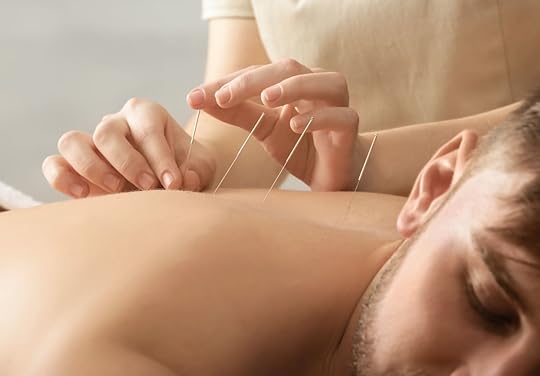
Photo: Africa Studio/Shutterstock
Healthcare in Norway is showing how CAM can infiltrate and even be embraced in the most hostile medical arena: hospitals. Physicians and administration in hospitals across all nations are typically far more skeptical of CAM than general practitioners or other health providers. Yet, even with recent controversy, the number of Norwegian hospitals offering CAM (and especially acupuncture) rose dramatically since 2000.
Two things happened: First, the Norwegian Research Council developed a CAM research group in 2000 at the University of Tromso. This became the National Research Center in Complementary and Alternative Medicine (NAFKAM), bringing CAM more evidence-based credibility that doctors are seeking. Second, hospital administrations began to take note of the growing demand from patients and providers to move away from medication reliance and use natural-based therapies. As a result, 50 percent of the hospitals in Norway offered at least acupuncture in 2008, doubling the number from seven years earlier. Patient satisfaction and demand were now a part of administrative decisions.
Then came 2012. A popular series in Norwegian public television ran a piece criticizing the lack of documented effect in acupuncture. A heavy debate fired off in the media with detractors claiming acupuncture as a “theatrical placebo.” Several Norwegian CAM providers at the time noted a decrease in acupuncture services, and hospitals in 2013 reported a drop in offered acupuncture. The debate rages on both in and out of Norway.
Yet Norway is nowhere near done with alternative treatments. Despite the drop in acupuncture in hospitals in 2013, overall hospitals were offering more total CAM services, moving from 50 percent to 65 percent in five years. Usage of CAM in psychiatric hospitals staggeringly jumped from 29 percent to 76 percent. By 2016, CAM usage was on the rise again in Norway, outpacing inflation and medical costs. And acupuncture remains the most widely used and requested CAM treatment in Norway, in and out of hospitals. Norwegian hospitals are proving that even with some bumps, traditional and CAM medicine can coexist, blending research and patient satisfaction, even in the most intensive medical settings.
2. Denmark: reducing sick leave and building trust with reflexology

Photo: Rido/Shutterstock
Denmark’s open attitude to modern CAM started over 25 years ago with reflexology and some field-shifting research. In 1992, reflexology was the most popular alternative treatment in Denmark (and remained the lead CAM for Danes until recently). With the demand came the money for research, and the research Denmark put out in the ‘90s is still widely touted by reflexologists across the world.
Three studies showed not only high patient satisfaction but also that reflexology for employees lowered sick leave. In three different work settings, and across longer and longer research spans, at least 75% of participants consistently reported partial to full pain relief. In total, the studies showed thousands of saved hours in sick leave and a decrease in leave loss of over $100,000 in just one sitting. The result of this research: Two-and-a-half times more Danes used reflexology in 2003 compared to 1987.
These days Denmark is seventh in CAM usage in the EU with at least one-third of its citizens using at least one alternative treatment a year. Over 60 percent would like to see insurance cover the vast array of alternative healing, and 73 percent of Danish doctors are positive about CAM research. Danes still use reflexology but are also seeking acupuncture, homeopathy, and chiropractic treatment. The increasing demand and the spreading interest appear directly related to optimism around past and future research. Denmark’s research push decades ago demonstrated that CAM methods could show results and helped legitimize funding for research around the continent and globe.
3. Lithuania: modernizing herbalism and sharing it worldwide

Photo: Ameena Matcha/Shutterstock
Lithuania is a growing medical tourism destination that is holding onto its traditional healing roots. Lithuanian folk medicine, including herbalism, started with rich and complex belief systems. This type of medicine was practiced within families or by local healers and involved herbal rituals with symbolic charms to treat the physical and spiritual health of the person. As the medical field advanced, herbalism remained accessible, affordable, and trusted by Lithuanians.
Today, Lithuania commandingly leads other EU countries when it comes to alternative medicine use and exports both supply and demand with herbal medicine. Lithuanian immigrants still desire herbal medication and search their local stores to find an equivalent. Most declare that herbal medication from Lithuania is still superior and either bring their own Lithuanian medication back after visits or have others bring orders. Lithuanian naturopathy and herbal stores have found success in larger cities across the US and Europe, keeping the tradition and business thriving.
In response to the national and global demand, Lithuanian university pharmacies and private pharmacies are active manufacturers on the global medicinal herbs scene. Modern herbalism is now in the field of endobiogenics, where herbs meet pharmacies. Eight percent of registered Lithuanian pharmacies prepare herbal medications with over 100 registered medicinal plants in Lithuania. Search through the resumes of leading global endobiogenists and you will find most had a fellowship at the Lithuania University of Health Sciences in Kaunas. Modern medicine processes are keeping Lithuanian herbalism alive and well.
4. Austria: alternative medicine as part of medical training

Photo: Kzenon/Shutterstock
Over and over patients say they want alternative medical treatments incorporated with their current medical services, not as a replacement. As the battles rage in the global medical field over who does what service and which services are covered, Austria is moving towards integration. More and more Austrian general practitioners (GPs) are receiving special training in CAM so that they can directly offer their patients multiple types of treatment.
The data on Austrian GPs receiving specialized CAM training is the definition of exponential growth. In 1996, nine percent of GPs were trained in at least one CAM service. In two years, that number doubled. There was another substantial jump by 2000 and then another 66 percent jump to 2007. Around 6,000 GPs now have special training in CAM. As the number of doctors seeking training grows so does the number of Austrian programs offering training, currently 29 across the country. The more programs that are offered through the Austrian Medical Association, the more the confidence of both patients and physicians increases. It’s no surprise then that Austria is in the top three users of CAM in the EU (along with Germany and Switzerland).
Integrative health care is the wave of the future across western medicine, bringing multiple types of health-care providers together under one roof in one center. Austria, with CAM, is taking this one step further by providing a single provider that can offer one assessment and multiple services.
5. Germany: leaders in evolving alternative medicine practices

Photo: Thomas Francois/Shutterstock
From being the birthplace of homeopathy to being first in CAM usage in Europe to leading regulation and coverage movements, Germany is at the forefront of alternative medicine. Now it’s time to see where the next stage of change happens in CAM. Doctors and politicians in Germany are currently moving to strike the incredibly popular homeopathy from insurance coverage, and how Germany proceeds from here may set the tone for CAM coverage across the EU.
Homeopathy is the only surviving alternative medicine that was born in Europe. Dr. Samuel Hahnemann from Meissen, Germany, discovered that cinchona bark, or quinine, produced mild symptoms of malaria. He came up with the concept that “like treats like” and that what would make a healthy person ill can make an ill person well. Holistic assessment and heavily diluted natural substances make up the core of homeopathic treatment. Modern German homeopathic remedies come as globuli, or little white balls, and are available from both GPs and Heilpraktikers (state-recognized natural health practitioners). Germany is one of the top two users of all complementary medicine in Europe, but its usage of homeopathy sets it apart and remains much higher than in other countries, especially in children and among wealthier Germans.
But the evidence for homeopathy is frequently called into question. France has moved to phase out insurance payments for homeopathy by 2021, and now German medical organizations are pushing to introduce a law to ban insurance reimbursement, as well. But the possible subtraction of homeopathy from coverage is not signaling a step back from Germans using CAM. On the contrary, the German medical system is multi-tasking; also on the agenda for CAM policies is regulation for Heilpraktikers, broad insurance coverage for all evidenced-based CAMs, and integrative training for German GPs. Germany has been innovative in healthcare and healthcare coverage, and the next steps they take in CAM regulation will likely lead trends. 

More like this: The best countries to move to get healthy for good
The post 5 European countries with different views on alternative medicine, and what can we learn from them appeared first on Matador Network.

How to visit the Dead Sea in Jordan
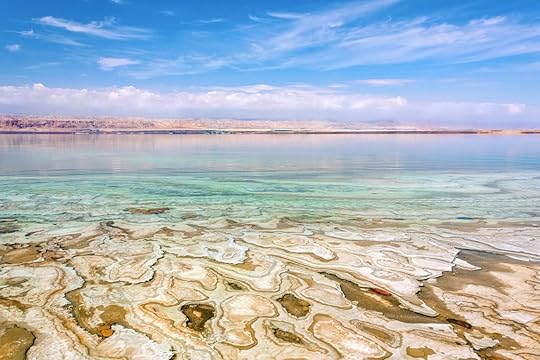
Don’t be put off by the name — the Dead Sea, a body of water located in the Jordan Rift Valley bordered by Israel to the east and Jordan to the west, is actually one of the most beautiful locations on the entire planet. It’s the second-saltiest significant body of water in the world behind Antarctica’s Don Juan Pond, and the high level of sodium means that practically no life can survive in it, including fish (but if you had a microscope, you’d find plenty of seaweed and bacteria).
Because of its position as the endpoint for several local rivers, the ensuing water has nowhere to go, so it sits until much of it evaporates, leaving behind a berth of minerals. The resulting water is 10 times saltier than the ocean. This salinated water is ideal for swimming, the beaches are great sunbathing spots, and the high mineral content hosts a number of health benefits. While most people consider the Dead Sea to be an Israeli destination, the Jordanian side is equally spectacular — but with far fewer crowds than its highly visited neighbor. You also cut down on driving time to get there, avoiding most of the tourist traffic coming from the other direction. Here’s how to make your Dead Sea adventure in Jordan happen, and everything you need to know to make the trip one to remember.
When to go

Photo: Jennifer Lundt
The Dead Sea receives a meager three inches of rainfall per year. As a result, the skies are nearly always clear and sunny, ideal for swimming and sunbathing. The lake itself lies 300 meters (984 feet) below sea level, making it the lowest foot-accessible place on Earth. The low elevation atmosphere blocks out additional harmful UV rays, actually making it safer to be in the sun than many higher elevation spots. Because of the lake’s extremely low elevation, winter temperatures are mild, averaging 63°F (17°C) in January at the southern end and 58°F (14°C) at the northern end. It never gets to a freezing temperature, but for ideal swimming and lounging conditions, spring and autumn are the best. Summers are hot but passable — especially if you plan on spending time in the pool at your hotel. You can visit the Dead Sea year round — just prepare to soak up the sun rays in summer and fall months or go for a chiller, cooler vacay in winter. Crowds tend to peak in the early autumn months.
How to get to the Dead Sea from Amman
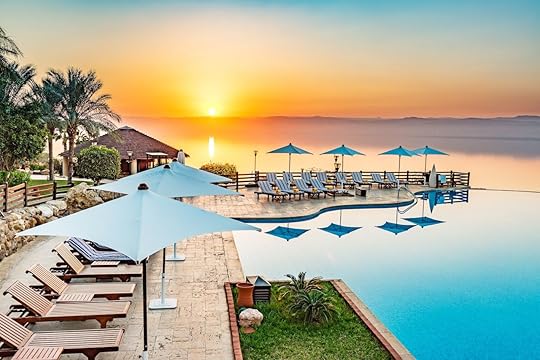
Photo: Richard Yoshida/Shutterstock
The best way to access the Jordanian Dead Sea is to fly into the country’s capital city, Amman. The trip from the city to the sea takes about an hour. Multiple tour operators, including Memphis Tours and Jordan Tours & Travel, offer daily guided trips from Amman to the Dead Sea, eliminating the need to use public transit or even do any actual trip planning.
In stark contrast to the stress and bustle of Amman, nearly everything else falls away once you pull out of town — the skyline, the traffic, the Arabic rap songs pulsating from other vehicles. If you elect to drive yourself, rent a car at Queen Alia International Airport and take Ma’in Street to the Jordan Valley Highway, also called Route 65, and follow signs to Amman Beach. If you’re coming from the city center, drive down Highway 40, which hugs the outskirts of the capital. Take this road until it merges with the Jordan Valley Highway and then turn to head south towards Amman Beach. Either way, you’ll be there in just over an hour. Uber operates in Amman and can drive you along the same routes, offering the views without you having to navigate or rent a car.
If you feel like venturing on a local bus, there are several local buses from Amman on a daily basis. You can catch a bus from the Mujaharin/Muhajireen bus station to Rame for about $1.50. The taxi from Rame to Amman Beach should be under about $5.50. Additionally, there are daily JETT buses straight from Amman. They leave daily at 8:30 AM from outside the Intercontinental Hotel and then from 9:00 AM at the JETT office by 7th Circle. The bus arrives at the Dead Sea at 10:00 AM and arrives back in Amman at 6:00 PM.
If you are staying in a hotel or hostel in Amman, the people working there can certainly help you with questions or set up transportation for you.
Where to stay once you get there
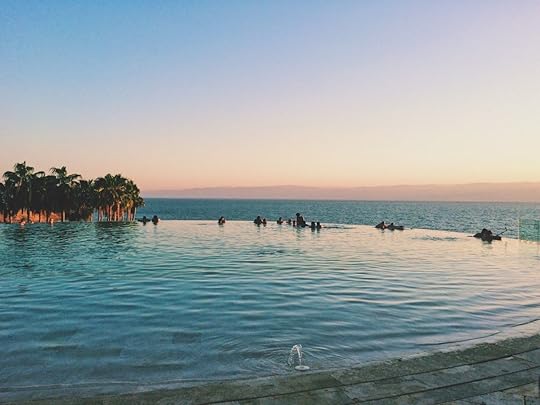
Photo: Jennifer Lundt
At this time, no real budget accommodations exist on the Jordanian side of the Dead Sea. On Booking.com and Airbnb, you can find several available apartments semi-close but not directly on the water. Prices start at about $60 per night and go up from there. On the hotel front, your options are pretty much exclusively five-star resorts. During my time in Jordan, I visited the Dead Sea on four different weekends and spent each in a different hotel — once each in the Movenpick and Kempinski, and once each in the local iterations of the Marriott and Hilton. All four blew me away. Rooms start at about $150 per night, but sea-view rooms, infinity pools, and comfortable lobbies are standard in each option. If you are looking for a place where splurging is worth it, the Dead Sea is certainly an excellent option.
It is worth noting that you have to include additional padding in your budget for food and drink at the hotel. There is tight security to get into most, if not all, hotels in Jordan. They thoroughly check your bags and will confiscate many basic food and drink items as they want you to spend your cash inside, not skirting the prices by bringing your own stuff. Those cocktails in the lounge may be tasty, but they are pricey.
It is also possible to do the Dead Sea on a day trip, due to its close proximity to Amman. There are public beaches available to tourists like Amman Tourist Beach or O Beach, both slightly south of the main hotel strip. You can also buy a day pass for many of the upscale resorts mentioned above. They will charge anywhere from $40 to $85 to use all of their facilities, including private beaches. Using a combination of transportation methods mentioned above, you can go early in the morning and make it back to Amman in time to enjoy an evening drink on Rainbow Street.
What to do at and near the Dead Sea
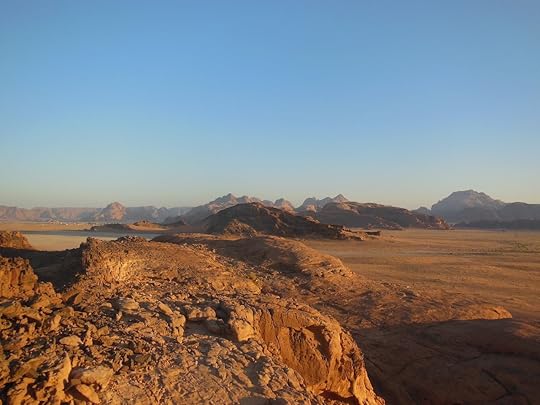
Photo: Corollack/Shutterstock
First off, be sure to float. Bring a book or newspaper and a camera, and enjoy the weightless sensation. Submerging yourself in the water only to feel the powerful force of the salination keep you afloat is a surreal experience. You rise to the surface time after time. It is nearly impossible to sink, though I don’t encourage you to try to challenge nature on this one. Tourists die every year trying to overpower the sea. The result is that their feet float while their heads sink. Definitely not ideal.
An estimated 35 percent of the water in the Dead Sea comprises dissolved minerals, including potassium, sodium, and magnesium. In total, scientists have found 26 different minerals, 12 of which are unique to the area. As a result, mud from the Dead Sea is one of the most healing and therapeutic spa treatments you can get anywhere. On the shores of nearly all of the beaches in the area, you can find buckets of mud and attendants. These dutiful gentlemen can assist you in covering your body, rinsing you off, or retrieving fresh mud from the sea for you. Bonus points if you do this as the sun sets. Stretch out by the palm-lined pool, drink in hand, and feel at peace as the sky changes into dreamy shades.
The famous biblical site of Mount Nebo, with sweeping panoramic views of Israel and Lebanon, is not too far away. Religious or not, this makes a beautiful day trip. Enjoy the walk up to the site and take in the breathtaking views.
For a uniquely adventurous option, visit Wadi Mujib, a beautiful canyon park that runs adjacent to much of the Jordanian Dead Sea coastline. If you are driving along the Trans Jordan highway that hugs the Dead Sea through the country, follow signs that will lead you to this beautiful canyon park. It’s best to go on a professional tour because depending on the season, the water can be fierce and raging.
Additional tips
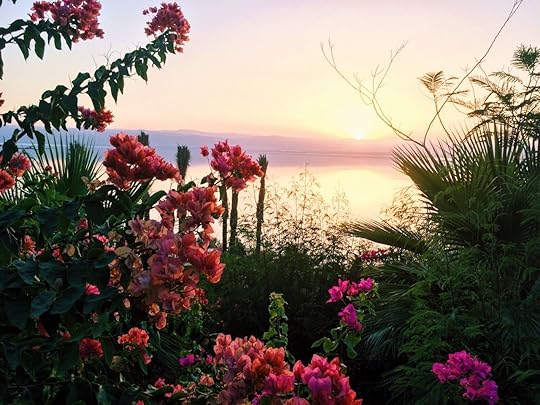
Photo: Jennifer Lundt
If you want a spa treatment, book in advance.
Dead Sea spas are not places where you can merely show up unannounced and expect treatment. The Dead Sea treatments are famous all around the world for their rejuvenating and healing properties, and as a result, eager health hedonists reserve spaces at these fancy spas months in advance. Plan ahead and consider booking your treatment at the same time as you book your travel accommodations.
Wear a dark bathing suit.
Ahem, this one should need no explanation. If you are swimming in the mud with a white bathing suit, it is certainly not the best look for when you get out of the water. Dark blues, browns, and black are the ideal swimsuit colors. As an additional note, resorts here are very modern and accustomed to tourists wearing any variety of bathing suits. No need to worry about modesty if you are staying and swimming, but if you are using the day spa, dress more conservatively.
Do not get the water in your eyes, mouth, or open cuts.
The water on the Dead Sea is known to sting. Do not shave in the few days prior to swimming in the Dead Sea and avoid exposure to open cuts, as the salty water will sting the empty follicles and give you a horrible burn.
Go before it’s too late.
Unfortunately, this destination will not be around forever. Due to evaporation and siphoning water levels, experts estimate the sea will have water only for another 50 years. 

More like this: The best things to do in Jordan beyond Petra
The post How to experience the Dead Sea from the crowd-free Jordan side appeared first on Matador Network.

Taco Bell Hotel and Resort photos
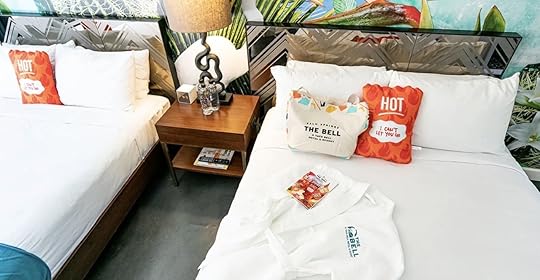
There has been a fervor surrounding the opening of the Taco Bell Hotel and Resort in Palm Springs, California, ever since it was first announced back in June, and the day of being able to see what it looks like has finally arrived. Taco Bell took over the V Hotel for five days, and a limited number of lucky guests from 21 different states were able to stay overnight. Reservations had sold out within just two minutes when the booking opened earlier this summer.

Photo: Taco Bell
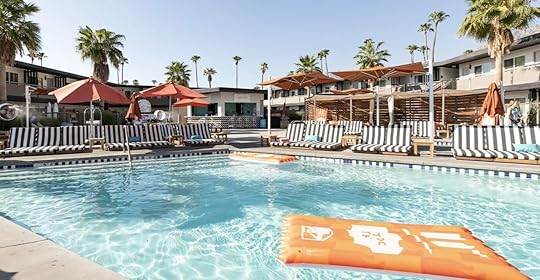
Photo: Taco Bell
The guests were able to relax on hot sauce packet floaties in the “Fire! Pool”; drink specialty cocktails at the Baja Bar; help themselves to chipotle butter popcorn with Verde seasoning; hear performances by Wallows, FLETCHER, Whethan, and Tate Tucker; and get a spa makeover featuring Cinnamon Twist Braids, Baa Manis, and Fire Fades. There were also gongs alerting guests to the arrival of new Taco Bell food, which was passed around by Taco Bell staff for maximum convenience. Of course, there was also a gift shop carrying all your favorite Taco Bell swag, including sunglasses and commemorative shirts, and rooms stocked with Taco Bell-themed decor like hot sauce pillows.

Photo: Taco Bell
The Taco Bell aesthetic was only in place for five days, and the hotel has already transformed back into the V. Given its popularity, though, there’s a good chance the promotion makes a return in the future. Like a good dream, now that it’s over we’re left to wonder: Did it even happen at all? 

More like this: The 9 coolest fast-food locations around the world
The post This look inside the Taco Bell Hotel in Palm Springs has us salivating appeared first on Matador Network.

Best California scenic photo spots

Go ahead and chalk up the bridge from Big Little Lies as another place ruined by overtourism. Not that the Bixby Creek Bridge along the Pacific Coast Highway was ever a huge secret. But while the show was airing, locals painted “Overtourism is killing Big Sur” on the arch bridge in protest of Instagramming visitors clogging up its highway.
It’s but one of many over-exposed locales in the Golden State. But the good news is that California is massive, and if you’re looking for some spectacular spots that won’t have you fighting half a tour bus to see, you’ve still got options. Though a year from now they may not be, here are nine of the most photogenic locales in California that are still pretty empty right now.
1. Cypress Tree Tunnel — Point Reyes National Seashore, Marin County

Photo: Liubov Pogorela/Shutterstock
A magical canopy of cypress trees lines this romantic driveway to…the Point Reyes National Seashore North District Operations Station? Yep, this might be the prettiest rangers’ driveway in America, set on the dreamy coast of Marin County in the Bay Area. The park is best known for its 19th-century lighthouse and its untamed shoreline, meaning most visitors miss out on the cypress tunnel. You can spot it from about a mile away, and the park service asks that you drive through the trees before taking pictures, parking your car in the lot on the left when you get through. This keeps the road clear, and aspiring photographers safe.
2. Fern Canyon — Prairie Creek Redwoods State Park, Humboldt County
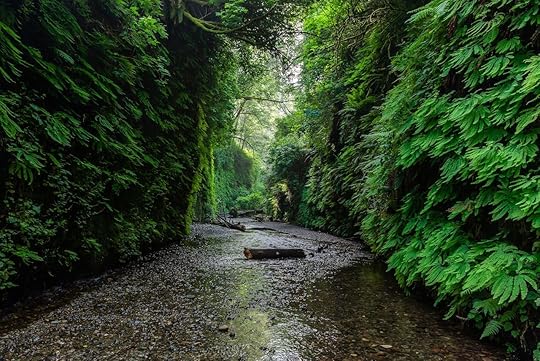
Photo: Alberto Loyo/Shutterstock
The 50-foot walls that encase Fern Canyon feel a little like those “edible walls” craft cocktail bars like to put in the back. Except instead of growing rosemary and other muddle-able treats, these natural walls sport six different species of ferns, some species dating back 325 million years. The prehistoric nature of the local flora might be why Steven Spielberg chose this canyon as a filming location for Jurassic Park 2: The Lost World, calling it an “unforgettable natural wonder.” The canyon isn’t terribly long, and involves a 10-mile drive on an unpaved road to reach, which is why many hikers choose to trek through the canyon and its tranquil footbridges multiple times during a visit.
3. Potato Chip Rock — Ramona, San Diego County

Photo: melissamn/Shutterstock
Usually, saying you’re standing on seven feet of solid rock sounds like a pretty stable proposition. Not so much at Potato Chip Rock, that despite being seven feet long looks about as thick as a Pringle. And creates the illusion that standing on it will put you on the wrong side of a Darwin Award. That said, this 7.6-mile out-and-back hike has proven safe over the years, and offers spectacular panoramas of San Diego County and the surrounding wilderness. The hike will take you about three or four hours and you’ll gain 2,100 feet. It’s a picture not easily obtained, but worth a half-day if you’re in San Diego.
4. Burney Falls — McArthur-Burney Falls Memorial State Park, Shasta County

Photo: Valya Markova/Shutterstock
The most impressive waterfall on Shasta County’s waterfall loop sits in McArthur-Burney Memorial Park along the Volcanic Legacy Scenic Byway. About an hour northwest of Redding you’ll find the spot Theodore Roosevelt dubbed “the eighth wonder of the world,” a 129-foot, fern-draped waterfall that drops over 100 million gallons of water every day. The sight of rushing whitewater and mossy canyons is awe-inspiring, but catch it on a clear day and you’ll see the entire scene reflect off the bright blue pool at the base too. Though Northern California locals know of it, Burney Falls may still be the most “where is THAT” waterfall photo op in the state.
5. Salvation Mountain — Imperial County

Photo: Kevin Key/Shutterstock
A road trip through the odd desert attractions of southeast California will almost always bring you to this adobe mountain 90 minutes from Palm Springs, the creation of don’t-call-me-an-artist Leonard Knight. It’s already somewhat Insta-recognizable by its giant “God is Love” mural that adorns its 50-foot summit. But the rest of the mountain is an ever-evolving collection of Knight’s inspirations, where he molds and paints new sculptures to add to the mound. The idea is to give thanks to God and the gifts he’s given the world, but much like grand cathedrals and renaissance art, you don’t need to be religious to appreciate its beauty.
6. Zabriskie Point Lookout — Death Valley National Park, Inyo County

Photo: Joanne Dale/Shutterstock
To appreciate the full technicolor glory of the Death Valley badlands, you need to delve deep into the national park and stop for sunset at this point off Highway 190. It might be the lone spot in the park where you’ll find anything resembling a crowd, there to appreciate the sandstone canyons, sand dunes, and salt flats below. They turn alternating hues of red, yellow, orange, purple, and even green as the sun sets, offering shades of those colors you’ll seldom see elsewhere. If you want to escape the masses at the roadside lookout, hike down into Golden Canyon where a fairly easy, two-mile out-and-back trail winds through the canyon, putting you in the middle of the spectacular desertscape.
7. Marin Headlands — Golden Gate National Recreation Area, Marin County
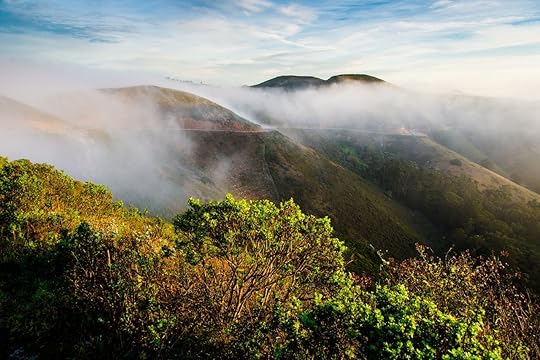
Photo: Pung/Shutterstock
Though the winding road just north of the Golden Gate Bridge is no secret to anyone, most tourists don’t have much use for the Marin Headlands after they get their requisite picture of the bridge and San Francisco skyline. But venture past the photo ops at Battery Spencer and you’ll find one of the most scenic drives in America, sporting new views of San Francisco Bay and the cities nearby around every turn. Ride the five miles down Conzelman Road and you’ll arrive at the Point Bonita Lighthouse, a seldom-visited 1855 lighthouse that juts out into the roaring Pacific. The third lighthouse built on the west coast is still active today, and an unexpected find near one of SF’s most-visited viewpoints.
8. Glass Beach — MacKerricher State Park, Mendocino County

Photo: Aneta Waberska/Shutterstock
We wouldn’t exactly call it a testament to recycling, but this beach near Fort Bragg is a fascinating look at what nature does with people’s trash. Rather than being made up of sand, Glass Beach is comprised of discarded glass bottles that have been polished by years of ocean erosion into shiny, colorful gems. Way better than that Texas-sized mound of plastic in the Pacific. The beach is actually a historic trash dump that’s been turned into one of the biggest sea-glass repositories in the world. It might not be a natural beauty in the traditional sense, but it is a testament to what nature can do with just about anything.
9. Bodega Bay — Sonoma County

Photo: yhelfman/Shutterstock
Those old enough to remember the 1963 Alfred Hitchcock film The Birds may recognize this coastal beach town as the place where those pesky avionic creatures wreak havoc. Of course, those old enough to recognize it also probably aren’t on Instagram, so it’ll be new to most of your followers. The town resembles something from the British Isles (but sunnier) with vast, windswept cliffs falling into rough, crashing ocean. It’s the kind of town where you’ll find it hard to believe you’re a mere 90 minutes from San Francisco because it has been kept so small. Just try not to draw too many other photo seekers here; it’s also not the kind of town that’s begging for an influx of tourists. 

More like this: How to tackle the best of San Francisco on foot with the new Crosstown Trail
The post 9 picture-perfect spots in California the masses haven’t discovered appeared first on Matador Network.

Amelia Earhart mystery almost solved

The famous mystery of Amelia Earhart’s disappearance may have finally been solved — at least, according to this guy. Dr. Robert Ballard has an impressive résumé when it comes to finding lost things; he found the Titanic wreckage in 1985, and his team also located the sunken Bismarck battleship. Now, Ballard claims to have a lead on the location of Earhart’s missing plane, and is on a mission to recover it.
Earhart and her plane disappeared over the Pacific in 1937, but after extensive search operations no trace has been found of either Earhart or the plane. While always intrigued by the mystery, Ballard had accepted that the plane had simply vanished, until a friend showed him an old photograph. Kurt M. Campbell, an assistant secretary of state for East Asian and Pacific affairs under the Obama administration, showed Ballard a black-and-white photo taken depicting an island, a reef, and what looked like landing gear from a Lockheed Model 10-E Electra. The photo had been taken near the Nikumaroro atoll in the Phoenix Islands (a protected area and UNESCO World Heritage site smack dab in the middle of the Pacific), by a British colonial officer, three months after Earhart’s disappearance.
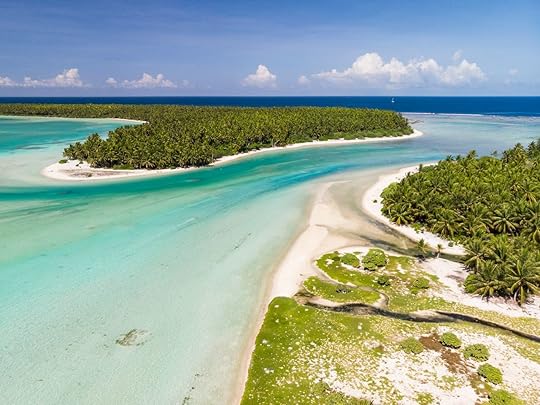
Photo: RWBrooks/Shutterstock
Ballard is now ready to pick up where others left off so many years ago, and search for traces of Earhart and her aircraft on and around the atoll. Equipped with HD cameras, a 3D mapping system, and remote-operated underwater vehicles, Ballard and his ship crew are certainly prepared for the endeavor.
He will share leadership on the expedition with Allison Fundis, who he hopes will one day take his place as one of the world’s most preeminent science explorers. The expedition is being funded by the National Geographic Society, for a television program that will air on October 20. 
H/T: The New York Times

More like this: Titanic II will make its maiden voyage in 2022
The post Explorer believes he may have solved the mystery of Amelia Earhart appeared first on Matador Network.

The best Basque restaurants in Boise
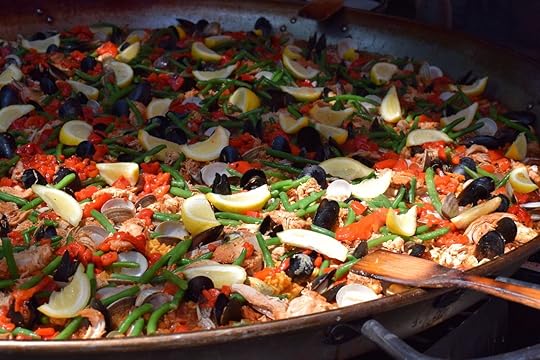
When most people think of Idaho and food, they probably think potatoes. But spuds aside, Idaho is a place filled with culinary surprises. Look no further than the state capital of Boise, home to one of the highest concentrations of Basque populations in the United States.
The Boise Basque Museum and Cultural Center estimates that there are some 15,000 Basque descendants living in Idaho’s Treasure Valley, which means there’s also a treasure trove of Basque-themed restaurants and bars. Enough, in fact, to make a worthwhile Basque culinary crawl.
Modern-day Basque Country is on the coast of the Bay of Biscay, straddling the Spanish and French border in the Pyrenees mountains. Basque people predate Spain and France, with a language (Euskara), cultural identity, and cooking tradition different than the rest of Europe. A Basque population ended up in Idaho, of all places, because of sheep herding, says Tony Eiguren, owner of Boise’s Basque Market.
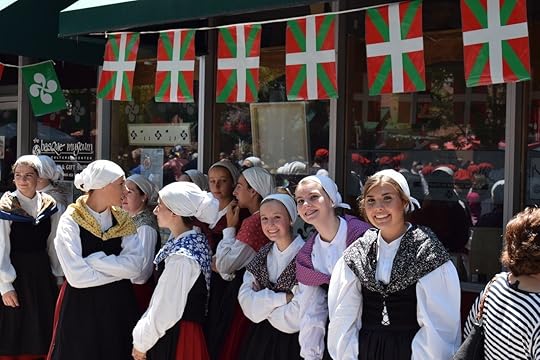
Photo: Tim Ebner
In the late 19th century, Boise was very much a frontier town that mirrored northern Spain’s livestock and agricultural-based communities. As a result, Spanish-Basques emigrated there to work as shepherds. That included Eiguren’s grandfather, Txomin, who came to the US in the 1920s at the age of 16.
“He had a cousin that beat him here, and his brother quickly followed,” Eiguren says. “One by one, Basques arrived here. It was a tough and grueling job.”
Eventually, Basques assimilated into American life but kept their food and cooking traditions. Today, there’s no better place outside of Basque Country to sample the cuisine than on Boise’s Basque Block, a street where you’ll find pintxos (small plates) and plenty of Spanish wine to go around.
“In many ways, Basque food is very simple home cooking,” Eiguren says. “There’s codfish, ham, lamb, steak — it’s always a celebration of family, community, and culture, and of course there’s drinking.”
The next time you find yourself in Boise, make a culinary crawl from these required eating and drinking stops.
1. The Basque Center

Photo: WHITE.studio/Shutterstock
Anyone who has traveled to San Sebastian or Pamplona knows that Basques produce dozens of ciders, as well as txakoli, a white-sparkling wine made primarily from the Hondarrabi Zuri grape that’s dry and acidic.
Sample these drinks at Boise’s Basque Center. It’s somewhat of a mix between a dive bar and a community center where Idaho’s Basque community gathers. You’re likely to overhear some Euskara as you drink. There’s no menu to speak of, so ask the bartender to pour either a Basque wine or cider. This is also the oldest operating establishment on the block (started in 1949) and is the force behind Basque festivals like San Inazio, held the last weekend of July, and Jaialdi, an even bigger party held once every five years.
Where: 601 W Grove St, Boise, ID 83702
2. Leku Ona

Photo: Tim Ebner
Before the Basque Block was an actual thing, it was a series of boarding houses for those who emigrated from Spain. Today, one of those buildings has been converted into a two-story bar, restaurant, and hotel, called Leku Ona, which means “the good place” in Euskara. It’s a good place to stop on a food crawl to sample heartier fare like grilled pork chops or a slab of steak, called txuleta, cooked medium-rare in a skillet with garlic, olive oil, butter, and salt.
Leku Ona also serves a wine cocktail called a Kalimotxo that’s worth trying, even if it sounds strange at first. The drink combines equal parts red wine and Coca-Cola served over ice. Don’t knock it until you try it, because kalimotxos are surprisingly sweet and refreshing.
Where: 117 S 6th St, Boise, ID 83702
3. Bar Gernika
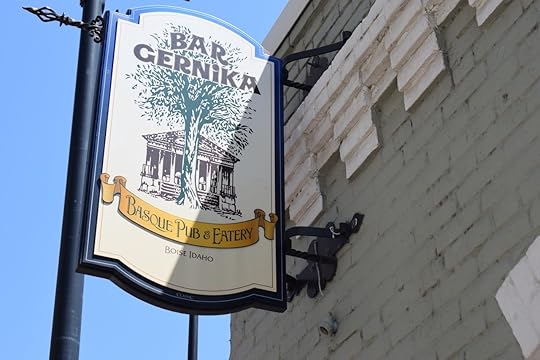
Photo: Tim Ebner
Bar Gernika is a traditional Basque tavern with counter service upfront and a casual dining room in the back. The kitchen cranks out miniature sandwiches, called solomo. These lean pork-loin sandwiches are topped with sweet pimentos, which make for an easy midday snack. Order up a few along with cheese croquetas and you’ll be snacking like Basques often do in between meals.
Where: 202 S Capitol Blvd, Boise, ID 83702
4. The Basque Market

Photo: Tim Ebner
Head to the Basque Market for a foodie souvenir. The market has more than 150 different types of Spanish wine, as well as imported olive oils, canned anchovies, peppers, and other pantry items. Come hungry to take full advantage of the counter filled with Spanish-style tapas like fried calamari, albondigas (meatballs), and tortilla española (Spanish-style omelet), as well as traditional Basque gilda (pepper, olive, and anchovy skewers). But the main draw for dining is a biweekly event, “paella on the patio,” when Tony Eiguren serves up giant portions of seafood and chorizo-chicken paella on Wednesdays and Fridays at noon for $9.99 a plate.
Where: 5926, 608 W Grove St, Boise, ID 83702
5. Bardenay

Photo: Bardenay Restaurant & Distillery (Boise, ID)/Facebook
While it’s not a Basque restaurant, per se, Bardenay sits in the middle of the Basque Block and is a great example of a local brewery and distillery embracing the flavors of the surrounding neighborhood. On weekends, Bardenay serves a boozy outdoor brunch that pairs nicely with scrambled eggs. Except here, it’s a Basque scramble made with three farm-fresh eggs, sauteed chorizo, and pimentos. The dish has a slightly spicy kick that can be tamed by a glass of ice-cold sangria. Best of all, there are about a dozen craft beers on tap, as well as house-made spirits, including rums, whiskeys, and vodkas.
Where: 610 W Grove St, Boise, ID 83702
6. Txikiteo
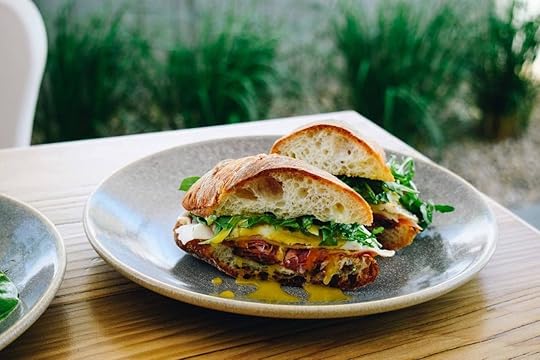
Photo: Txikiteo Boise/Facebook
In Euskara, txikiteo is a stroll you take with friends to eat and drink, so it’s a fitting stop for any exploration of Boise Basque culture. This cafe-style restaurant is a few blocks off the Basque Block, but go for the best Basque pintxos in town. Prioritize the stuffed piquillo peppers, which come packed with ham and a thick and creamy bechamel, or the warm shrimp skewers served in a buttery olive oil, capers, and herb sauce. One bite of each, and you’ll immediately see why Txikiteo lives up to the hype of Basque cooking that’s made from simple, yet top-notch, ingredients.
Where: 1401 W Idaho St, Boise, ID 83702 

More like this: Everything you always wanted to know about tapas but were afraid to ask
The post America’s best Basque food is in Boise, Idaho appeared first on Matador Network.

Seattle business food, bars, hotels
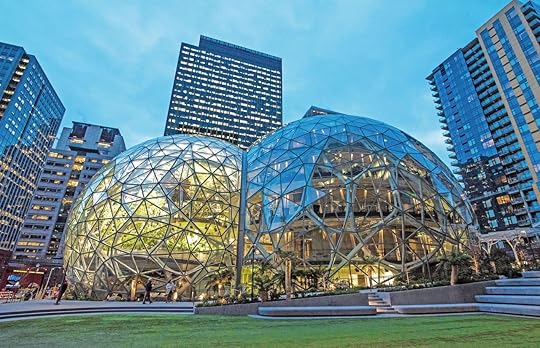
To say Seattle has changed a little in the last 30 years would be the understatement of the century. The blue-collar lumber town that was once full of Boeing machinists and the people who supported them is now a full-blown tech hub, now drawing as many visitors for Amazon’s concrete jungle as it does for its abundance of temperate rainforest.
Seattle, especially during the summer months, is the picture of a bleisure destination (which, if you’re not hip on the trend, means combining your business trip with personal leisure for a mini work-sanctioned vacation). A place where you might come to meet with the people at Microsoft or Amazon or Facebook, then see Mount Rainier in the distance and think, “I wanna spend a few days here.” The Emerald City is one of America’s finest, and on a clear day there may be no prettier place in the nation. So if you’ve been called to Seattle — or its booming technology neighbor in Bellevue — for work or a big convention, here’s how to enjoy the city both during and after your work time.
For business
The home away from home
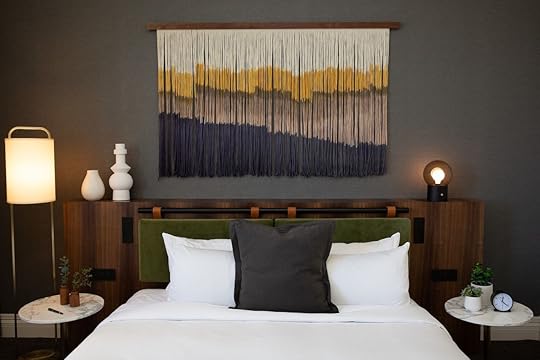
Photo: Kimpton Alexis Hotel Seattle/Facebook
For those spending their days at the Convention Center, many downtown hotels are walking distance away. Start with the Motif Hotel, right across from the 5th Avenue Theatre with large rooms and a fifth-floor bar called Frolik overlooking downtown. It offers a complimentary wine happy hour starting at 4:00 PM, and if you’re nice to the front desk folks, they’ll keep it going for a while.
If you’re working from your room, and possibly hosting clients, check out the Kimpton Alexis. Every room in this refurbished collection of century-old buildings is different, many with conference areas right inside your room. And the bedroom door closes, so your colleagues aren’t looking in on your literal dirty laundry. It also has a gym with a rock climbing wall if you want to tell people you went climbing while you were in the Northwest.
For something a little more leisure and less business, The W is your move. One of the original W hotels, the downtown location has a recording studio inside and a lobby Living Room bar that’s still one of the top cocktail lounges in the city. It’s right across the street from the library and a short walk to Pioneer Square, the Washington State Convention Center, and Pike Place Market.
On the eastside, your business go-to is the Seattle Marriott Bellevue. Confusing name? A little bit, but this towering downtown Bellevue spot lets you walk to most eastside offices and has pretty easy freeway access to the city. It also has a massive gym (with Peloton bikes!) and a big, airy lobby bar and restaurant with a scenic video board.
The morning coffee

Photo: Anchorhead Coffee/Facebook
If there’s one thing Seattle is known for, other than rain, it’s coffee. And while you might be tempted to brave the line to have a frappuccino at the original Starbucks, it’s not the 80th-best coffee shop in the city. Near the convention center, the best and easiest option is Anchorhead Coffee, which does a heavy variety of pour-overs if you’ve got time to wait. Elm Coffee and Zoka Coffee are also solid picks. And if you’re willing to go explore, take a trip to Phinney Ridge and visit Lighthouse Roasters, where they start roasting in a massive cast-iron roaster every day at 7:30 AM.
The business lunch

Photo: Patagōn/Facebook
Ethan Stowell, one of Seattle’s hall-of-fame restaurant names, has a bright Italian eatery near the convention center called Cortina that has small plates and salads, as well as wood-fired pizzas if you don’t mind an afternoon food coma. For a more leisurely, three-martini lunch, belly up to Patagon at the Charter Hotel, where you can pair flame-broiled meats with an extensive wine selection. If you’re dining solo, there’s an outdoor food court on 3rd Ave. and Marion Street with about six different countries worth of cuisine, plus a solid burger spot.
The daytime work drinks

Photo: Pike Brewing Company/Facebook
If there’s a third thing Seattle is known for, it’s probably beer. The city was doing craft beer when most of America was still hooked on macrobrews, and the Pike Brewing Company is one of the originals. Stop in for Nellie Golden Ale or a Kilt Lifter if your afternoon workload is light. If your workload isn’t anywhere near light, mix coffee with your cocktails at the Starbucks Reserve Roastery on Pike Street near I-5. For something a little more refined, sip on Seattle’s most impressive collection of French wines at the La Caviste wine bar.
The after-work decompression

Photo: Checubus/Shutterstock
One of the great Seattle after-work traditions is taking a lap around Green Lake, a man-made lake in northeast Seattle that doubles as the city’s defacto outdoor recreation area. The 2.8-mile loop is the perfect stroll to unwind after a long day. You can also immerse yourself in the wetlands and enjoy a front row seat to Lake Washington at Magnuson Park, also home to the Soundgarden sculpture for which the famous band is named.
Closer to downtown, take a stroll through the Olympic Sculpture Park near Pike Place Market. It’s an oasis from the tourist-trap next door with views out over Elliott Bay.
If you’re on the eastside, walk half a mile from downtown Bellevue through Downtown Park to Meydenbauer Bay. There, you’ll grab a kayak at the REI Boathouse for a little DIY tech mogul home tour along Lake Washington. In an hour you can paddle past the multi-million dollar mansions of tech titans you’ve probably never heard of but who’ve built houses that look like you should. Bill Gates’ house is along here somewhere, too — just be careful because security will stop you if you get too close.
The happy hour
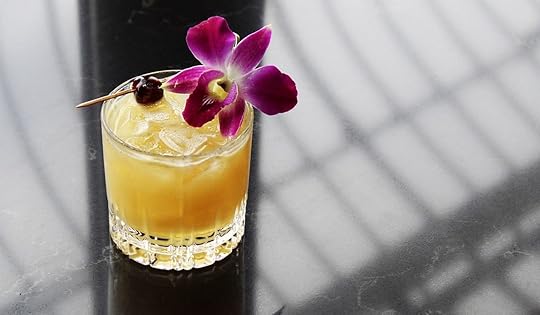
Photo: Smith Tower/Facebook
No bar is giving you a better happy hour sense of place than the one atop the Smith Tower, the iconic 1920s skyscraper that was once the tallest building on the West Coast. The Chinese lounge on the top floor is done up in ornate oriental ceilings, with a solid cocktail menu and 360-degree views of the city and the water beyond.
If you want an observation deck where you can drink outside, hit The Nest at the Thompson Hotel. The best rooftop bar in Washington parallels the shores of Elliot Bay and has introduced the concept of a drink queue to American patrons. It might be the most civilized rooftop hotspot in America.
Closer to ground, Cantina Lena is the go-to for margaritas and appetizers. This Tom Douglas creation boasts a massive collection of tequilas and mezcals, plus dirt-cheap tacos and chips and guac during happy hour.
On the east side, the undisputed winner is the Living Room at the W, where swinging chairs and comfy couches all come with a sprawling view of downtown Bellevue.
The business dinner
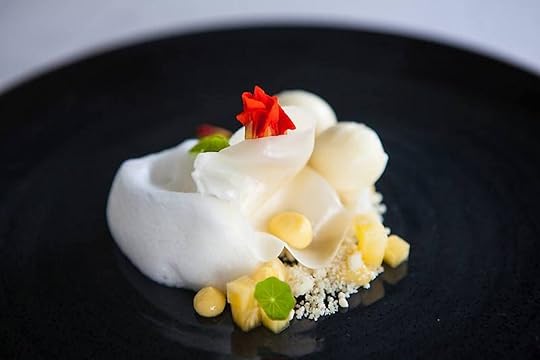
Photo: Canlis/Facebook
In seafood-heavy Seattle, business dinners don’t always mean tying one on around a big, smoking piece of meat. Sometimes it means gourmet, expense-account dining with sweeping views of the city at spots like the venerable Canlis, a date-night and special-occasion staple in Seattle for decades.
If you do opt to go the big meat route, you can never go wrong at Metropolitan Grill. Though for something a little more contemporary, try The Butcher’s Table, which serves Mishima Reserve Wagyu Beef and an equally impressive seafood menu with stuff like crab gnocchi.
To get to know your clients beyond just what they do for a living, take them for drinks at The Nest then downstairs to Conversation where, as the name might imply, the family-style dishes like dippin’ dot oysters and crispy split pigs head lend themselves to talking about more than just work.
The spot for after dinner
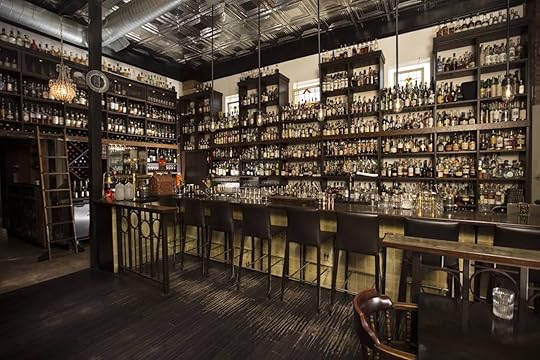
Photo: Canon Seattle/Facebook
With a large group you want an after-dinner drinkery where there’s something for everyone. So hitting the place with the largest spirit collection in America is probably a good idea. That’ll be Canon, where over 4,000 different liquors await, ensuring there’s something for even the pickiest drinker. For the city’s best craft cocktails, hit Navy Strength, which won Best New American Bar at 2018’s Tales of the Cocktail. For nighttime views of the city and some of its best beer, grab drinks at Old Stove Brewing at Pike Place Market. If you’re lucky, the after-work crowd will have thinned out, and you can grab a seat for sunset over the water.
For leisure
The way to see the city

Photo: Edmund Lowe Photography/Shutterstock
Nothing will put you in awe of Seattle’s beauty like taking a trip on a Washington State Ferry. They leave right from downtown and can take you across gleaming Elliot Bay into Puget Sound to any number of ports. Where you go isn’t as important, as a ferry trip is truly about the journey and not the destination. Not to mention it gives you countless photo ops with the city skyline, Mount Rainier, the Cascades, and the Olympic Mountains behind you.
For a more-aerial view, drive down to the Muckleshoot Casino at the crack of dawn and hop on a hot air balloon with Seattle Ballooning. It’s as close as you’ll get to Mount Rainier in a balloon, and you can see all the way to the downtown skyline and into Puget Sound from the top.
The neighborhood to explore

Photo: cdrin/Shutterstock
Once upon a time, Ballard was a sleepy enclave of aging Norwegians and excessive amounts of lutefisk. Not so much anymore, as the neighborhood became the destination of choice for transplants and now feels a little like the East Village set in Seattle. Yes, it’s still home to the National Nordic Museum and you can watch salmon swim upstream as boats raise and lower at the Ballard Locks. But Ballard’s new blood makes it ripe for exploration.
Wander through the Ballard Farmers Market on a weekend and sample produce and bread from all over the Northwest. You can dine in an old fire station at the Hi-Life or eat smoky Mexican food at Asadero. Get your fruity drinks on at No Bones Beach Club, a vegan tiki bar that features neither bones nor a beach. Speaking of beaches, Ballard is also home to Seattle’s best beach at Golden Gardens, a hotspot for barbecues and families with soft sand and views of Puget Sound. It was also a landing point for boats smuggling whiskey from Canada during prohibition.
The best place for a variety of food
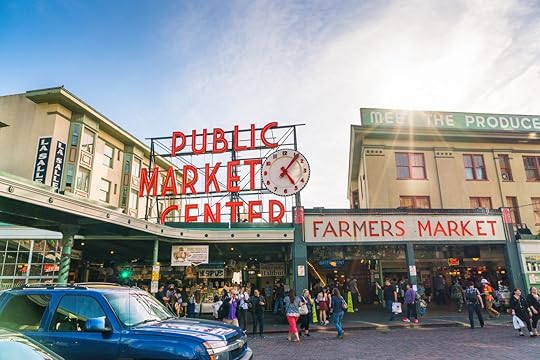
Photo: Checubus/Shutterstock
Though you’ll be fighting tourists tooth and nail, Pike Place Market is still offering the best selection of food, inch for inch, in the entire city. The aforementioned outdoor food court on 3rd and Marion is a hidden gem with teriyaki, Middle Eastern, Mexican, sushi, and burgers all surrounding a bright sunny courtyard. You can also hit the Center House in Seattle Center, which makes for a perfect lunch locale if you’re visiting the newly revamped Space Needle.
The restaurant to try
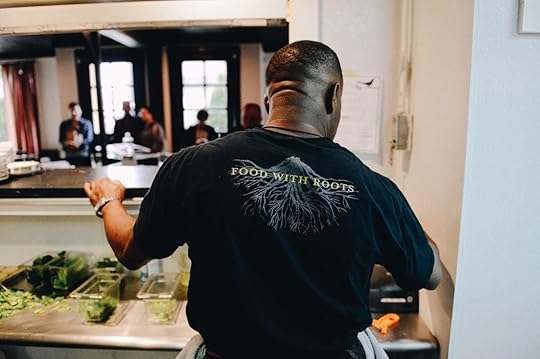
Photo: JuneBaby/Facebook
Tucked away in northeast Seattle, you’ll find the residential neighborhood of Ravenna. It’s not the kind of place you’d expect to find the 2018 James Beard Award winner for Best New Restaurant. But calmly sitting there on NE 65th St you’ll find JuneBaby, a southern-inspired spot from Eduardo Jourdan, who also took home a trophy for Best Chef: Northwest. The fried chicken may have supplanted Eizell’s as the city’s favorite, but you’d be hard pressed to find a local who’d admit it.
Just down 65th is the restaurant that won Jourdan his Best Chef award, Salare. It’s as good if not better than its cousin down the street, with a Mediterranean focus and vegetable-driven entrees. A few miles from Ravenna in Greenwood there’s also Joule, a small-plate Korean steakhouse with stuff like spicy rice cakes, turnip cakes, and jerk-spiced carrots for the inevitable vegetarians.
The day trip
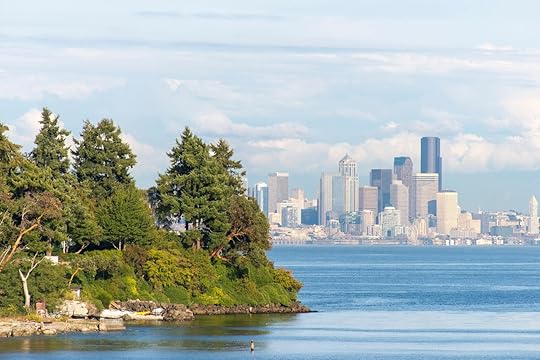
Photo: Danita Delmont/Shutterstock
As any local will tell you, the best thing about living in Seattle is the abundance of cool places you can go just for the day. If you want some spectacular views and not-too-challenging day hikes, head east to Issaquah and North Bend. The filming site for Twin Peaks also has some spectacular hikes, like the climb up to Rattlesnake Ledge where you’ll look over a bright blue lake and green mountains for miles.
About two hours east into the Okanogan-Wenatchee National Forest you’ll find the little town of Leavenworth, a Bavarian theme village that during winter feels like you’ve driven across the pond. Two hours in the other direction brings you to Olympic National Park on the Olympic Peninsula, the only temperate rainforest in the contiguous United States.
If the islands are calling you, the easiest one to do in a day is Bainbridge Island. The hour long ferry ride is worth doing by itself, but once you’re on the island the traffic and crowds of Seattle seem a world away. Take a walk along the Waterfront Trail along the shores of Eagle Harbor. Or head into the Grand Forest and make your way to Battle Point Park. Then reward yourself with a beer at Bainbridge Island Brewing.
The place to take in the local culture
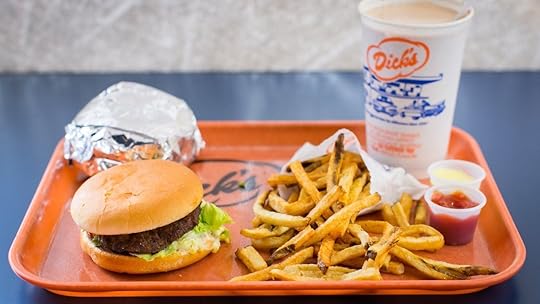
Photo: Dick’s Drive In Restaurant/Facebook
It’s hard to believe that Pyramid Brewing was once called a “microbrewery.” Of course, Pearl Jam was also once a garage band, so lots of things in Seattle have grown since the early ‘90s. Pyramid’s current brewery sits right across the street from T-Mobile Park and Century Link Field, and if the Mariners, Sounders, or Seahawks are playing, it’s the best place to get a feel for Seattle’s eclectic fans.
You also can’t leave Seattle without eating a bag of Dick’s. It is to Seattleites what In-n-Out is to Californians, a landmark burger spot longtime locals don’t shut up about. Except at Dick’s everyone has to stand outside, and it becomes as much of a social occasion as it is an excuse to get burgers. You’ll find everyone from tech billionaires to high school kids to Sir Mix-a-Lot standing in line for a Deluxe and fries. And as Seattle has changed so much over the past few decades, its lone constant is the giant orange beacon of Dick’s. 

More like this: The 9 best hikes within one hour of Seattle
The post How to turn your Seattle work trip into a mini vacation appeared first on Matador Network.

Perseid meteor shower is happening
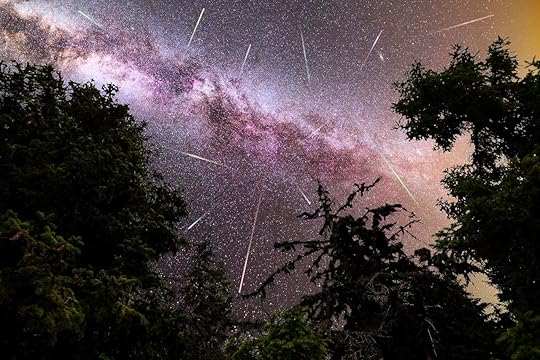
Meteor shower enthusiasts have probably been looking forward to this for months, but if you’re new to the stargazing game, take note: The best meteor shower of the year is happening tonight.
The Perseid shower is scheduled to peak late on August 12 through the early morning of August 13. The shower is famous for its fast, bright meteors that streak across the sky and leave a wake of light behind them, though this year’s shower won’t be quite as dazzling as previous years due to the brightness of the full moon.
You will be able to start spotting meteors from 9:00 PM to 10:00 PM on Monday night, but the shower will peak around 2:00 AM. Of course, the best way to view the shower is by going somewhere with as little light pollution as possible, and make sure to allow at least 30 minutes for your eyes to adjust to the darkness. That includes not looking at bright screens, like your cell phone.
Don’t worry about bringing binoculars or a telescope to view the shower — those instruments will actually hamper your experience. They limit your field of view by focusing on a small portion of the sky, and with a shower as massive as the Perseids, you want to see as much of the sky as possible.
If you live in a city or somewhere you won’t be able to get a good first-hand view of the shower, you can watch NASA’s live stream on Facebook. 

More like this: The next 10 total solar eclipses around the world
The post The most dramatic meteor shower of the year is happening tonight appeared first on Matador Network.

Hikes and views near Reykjavik

If you’ve heard anyone talking about a trip to Iceland, you’ve likely heard them speak in a string of superlatives: the most beautiful, the cleanest water, the most geothermally active, the best hikes. But you don’t have to get deep into remote Iceland to experience these amazing natural features. Reykjavík, meaning “smoky bay” in Icelandic for the steam that rises from the ground, is an ideal hub for exploring many of Iceland’s diverse and wildly beautiful landscapes. Here is a collection of seven spectacular day hikes you can do if you are based in the world’s northernmost capital city.
Before you go
Icelanders love to tell visitors that if they don’t like the weather, just wait five minutes. Weather systems can move fast here. One moment it’s sunny and the next it’s raining sideways. Bring an umbrella only if you want to make the locals laugh as you struggle with it in the relentless wind.
You’ll need layered clothing, including a good wind and waterproof jacket, and we recommend bringing a pair of waterproof pants along on hikes. Trails in Iceland can be rough and strewn with sharp lava rocks, so make sure you wear sturdy hiking boots. While you’re at it, bring gloves and a hat, even when visiting in the summer. The trails below are all best visited from May to September.
1. Mount Esja
Round-trip hike: four miles
Distance from Reykjavík: six miles
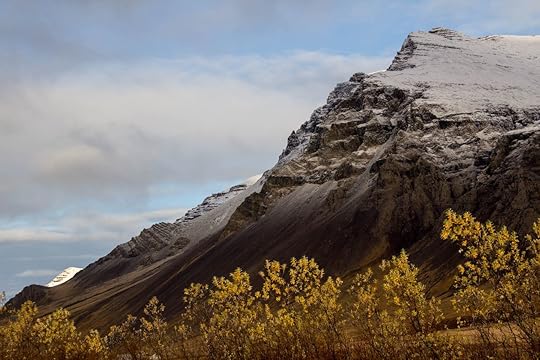
Photo: Agatello/Shutterstock
To really know Reykjavík, you’ve got to hike Esja. Viewable to the north from anywhere in the city, Esja is the long, flat-topped mountain range across the bay. There’s a reason this is the most popular trail in Iceland — in fewer than 20 minutes from downtown Reykjavík, your boots can be on the ground, making their way up to Steinn, a large stone marking the traditional turnaround point of the trail. The views from Steinn over Reykjavík are magnificent, especially on a clear day.
The trailhead is located about six miles north of Reykjavík on the ring road (Route 1). Look for the sign for the parking lot. At the trailhead you’ll find a sign showing all the possible routes you can take and their difficulty, but keep in mind that all routes are steep. One popular route takes you first through a forest of birch trees, which is a lovely thing to find Iceland — where many native forests were lost after humans arrived a thousand years ago.
Most hikers spend two to four hours here and will be comfortable with the four-mile, round-trip hike up to Steinn. More experienced hikers may want to continue on the rocky trail to the summit, which is nearly 3,000 feet above sea level. Don’t attempt this trail in poor weather or snow. After your hike, perhaps duck in to the Esjustófa Café near the trailhead for a snack.
2. Búrfellsgjá
Round-trip hike: four miles
Distance from Reykjavík: 10 miles

Photo: Neja Hrovat/Shutterstock
Búrfellsgjá isn’t frequented by many tourists, yet, but locals love to do this easy hike just a few miles southeast of Reykjavík. Here you’ll walk for two miles through an ancient lava channel up to the old volcanic crater. From there you’ll have expansive views over the lava canyon and nearby Heiðmörk Nature Reserve. Return the way you came. Búrfellsgjá is a great introduction to Icelandic volcanic landscapes, and you just might start to understand why over half of all Icelanders believe that elves make their homes in ancient lava flows.
Búrfellsgjá is located adjacent to Heiðmörk Nature Reserve just south of Reykjavík near Hafnarfjörður. The parking lot for the trail is on Heidmerkurvegur (Route 408). From downtown Reykjavík, take Route 40 toward Keflavík. At Vífilsstaðavegur make a left. Continue for two miles where it turns into Elliðavatnsvegur. Follow it for another 1.5 miles until you reach Heidmerkurvegur and make a left. The parking lot will be on your right after another two miles. Cross the road to get to the trail. Plan on spending two to three hours here.
3. Keilir
Round-trip hike: 4.5 miles
Distance from Reykjavík: 25 miles
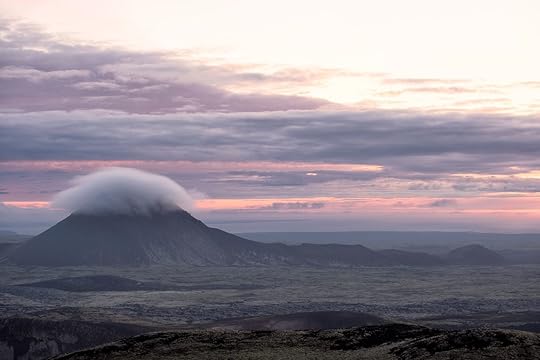
Photo: Johann Helgason/Shutterstock
As soon as you land in Iceland’s Keflavík airport, Keilir demands your attention. It’s that striking cone-shaped mountain in the distance. You’ll likely compare its shapeliness to Mt. Fuji, but unlike Fuji, summiting Keilir can be managed in a three-hour, round-trip hike. On a clear day you can see the ocean, a glacier, steam clouds rising from the nearby Blue Lagoon, and the city of Reykjavík from the summit.
Keilir is volcanic in origin but not a volcano itself. Rather, it was formed during the last ice age during an eruption under a glacier. You’ll likely find the hike to be moderately strenuous with about 1,300 feet of elevation gain in all. You should have a 4×4 vehicle to get to the Keilir trailhead as the gravel road can be quite uneven and bumpy. From the main road between Reykjavík and Keflavík Airport, take the exit toward Route 420 and follow the signs for Keilir. There is a parking lot at the trailhead. I recommend pre-booking a visit to the Blue Lagoon to follow your hike.
4. Reykjadalur
Round-trip hike: 4.4 miles
Distance from Reykjavík: 31 miles
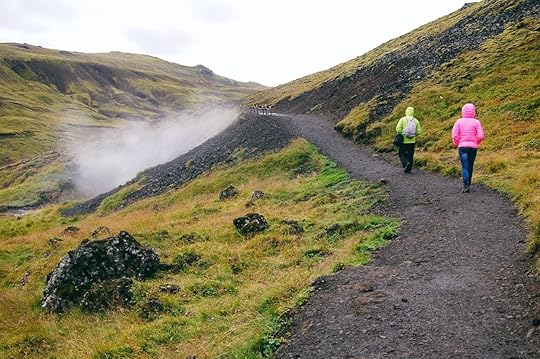
Photo: Ksusha Dusmikeeva/Shutterstock
Reykjadalur is a place where you can quite literally immerse yourself in one of Iceland’s most fascinating geothermal landscapes. The hike winds through a colorful valley dotted with hot springs, mud pots, steam vents, and, best of all, a thermal river. Bring a bathing suit and towel with you because you’ll want to break up your hike with a warm soak.
The Reykjadalur trail takes about an hour to hike each way. It’s a popular place these days so you’ll likely see plenty of other people relaxing in the water. Be careful to test the temperature before getting in; typically the water is hotter the higher up the trail you go.
Getting to the trailhead is easy. Follow the ring road (Route 1) south out of Reykjavík for about 29 miles to the town of Hveragerði. Make a left at the traffic circle here and follow the road until you see a sign for the Reykjadalur parking area. Expect to spend about three hours here. I also recommend visiting the Geothermal Energy Exhibition at Hellisheiði geothermal power plant either before or after your hike. It is located just off the ring road, about 10 miles before Hveragerði.
5. Glymur Waterfall
Round-trip hike: four miles
Distance from Reykjavík: 71 miles
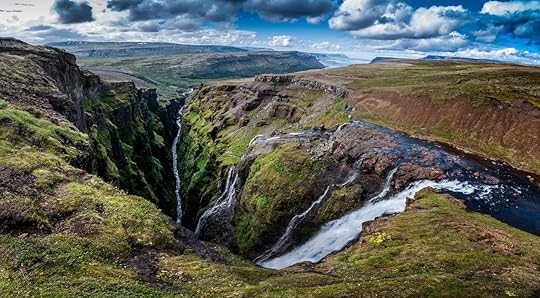
Photo: MikeDrago.cz/Shutterstock
Glymur is Iceland’s second-tallest waterfall and nothing short of dramatic. On this hike you’ll cross a river and then follow the steep trail along a deep, mossy canyon as white Arctic fulmars soar beneath you. Before long, the silver thread of Glymur will come into view at the head of the canyon, a breathtaking scene. It’s your choice to either return the way you came or continue to the top to cross the river again and come down the north side of the canyon. You should only attempt this hike during the summer when a log and hand-line are set up to assist hikers with the river crossing.
The parking lot for Glymur is a little over an hour from Reykjavík. Follow the ring road north and turn right on Route 47 at Hvalfjörður just before the tunnel. Drive to the head of the fjord where you’ll see a sign on your right for Glymur. Bring a pair of water shoes or sandals for wading in the river and a pair of trekking poles for balance. The water level will depend on how rainy it’s been. If you decide to follow the trail all the way to the top and return via the north side, the total hike is about four miles. Expect to spend three to four hours here.
6. Landmannalaugar
Round-trip hike: Varies
Distance from Reykjavík: 113 miles
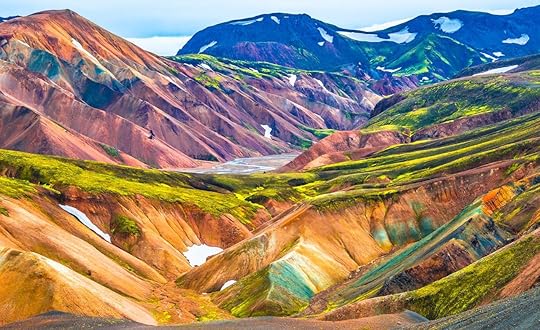
Photo: Oleg Senkov/Shutterstock
Jaw-dropping is the best way to describe the rhyolite mountains of Landmannalaugar, a remote region in the Icelandic highlands. It looks like Dr. Seuss painted it with watercolor — a kaleidoscope of greens, pinks, reds, and oranges liberally striped with black lava and white snow. You can choose your own hiking adventure on arrival; you’ll find several options on the signs posted at the visitor center. Start with the easy 2.7-mile Laugahraun loop and then either try another trail or soak in the natural geothermal pools near the visitor center.
Landmannalaugar is the northern terminus of the world-famous Laugavegur Trail. People typically take three to four days to hike the entire 33.5-mile-long trail and must pre-book campsites or mountain huts long before they travel. Coming here for a day hike allows you to see one of the most beautiful parts of the trek with a lot less time and planning.
Getting to Landmannalaugar is an adventure in itself. To do it on your own, you should ideally have a 4×4 although most cars could make it if the weather is good. Take Route 1 south from Reykjavík then turn left onto Route 26 after Selfoss. This becomes F26 after a while. Eventually you’ll turn right onto Route F208 and that will take you all the way to the parking lot.
Alternatively, a variety of outfitters in Reykjavík offer day tours with transportation, and Reykjavík Excursions and Sterna Travel run round-trip shuttle buses daily from June to September. Pre-book your tickets. You should expect to spend 12-14 hours total to do this day trip, half of that time driving. It’s worth it.
7. Þórsmörk Nature Reserve
Round-trip hike: Varies
Distance from Reykjavík: 93 miles
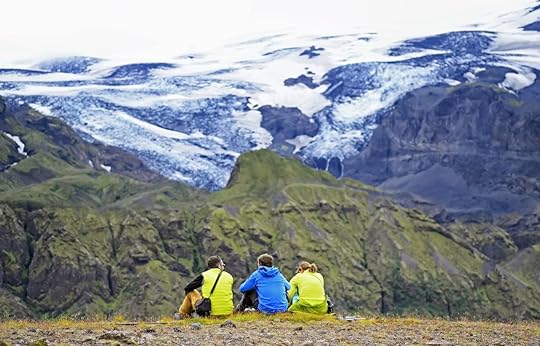
Photo: natalia_maroz/Shutterstock
My friends in Iceland tell me that visiting Þórsmörk will add five years to your life — its beauty and serenity are just that powerful. Þórsmörk, meaning “Thor’s forest,” is a region of the southern Icelandic highlands characterized by glacial river valleys, mossy birch forest, and craggy peaks. You can choose from a variety of well-marked trails of varying difficulty to explore when you arrive, all promising incredible views. Note that the Þ (Thorn) is pronounced like “Th,” and you may find it written that way on some websites.
Whereas Landmannalaugar is the northern terminus of the world-famous Laugavegur trek, Þórsmörk is its southern counterpart. And just like Landmannalaugar above, doing Þórsmörk as a day trip from Reykjavík is an ideal way to see one of the best parts of this trail without doing much pre-planning.
The thing about Þórsmörk is it’s tough to get to on your own. You’d need a sturdy 4×4 vehicle with high clearance to cross a couple of rivers on the way. So, I recommend booking either a guided tour or independent transportation from one of the many tour companies in Reykjavík. I like Sterna Travel’s independent tour because they give you six hours to explore on your own before returning to Reykjavík. The drive is four hours each way, so plan on being away from your hotel for a total of 15 hours. 

More like this: 3 epic hikes you need to do on Norway’s Lofoten Islands
The post 7 spectacular day hikes from Reykjavík appeared first on Matador Network.

Matador Network's Blog
- Matador Network's profile
- 6 followers



